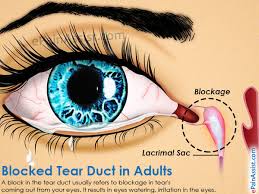Occuloplasty is a newly emerging sub-specialty of ophthalmology that deals with diseases of eyelids, orbit, and lacrimal system. It deals with cosmetic as well as reconstructive surgeries such as –

This unit deals with facial aesthetics,Orbital diseases,and reconstruction.Surgeries of aesthetic as well as clinical importance,trauma management,Botox injection therapy complete the bouquet of ophthalmic services offered by Wavikar Eye Institute.

Due to various causes such as injury, infection, or diseases, one can lose an eye. If a patient is diagnosed with a tumor inside the eye or has a painful blind eye due to some incurable condition, the eye may have to be removed. Very rarely a child is born with an eye missing. When surgery is performed to remove a damaged eye the operation is called enucleation. The space resulting from the removal of the eye needs to be filled with an implant to ensure adequate and symmetric growth of the bones of the face. On top of that, a prosthetic eye is placed to restore a normal appearance.

Tear Film is the source of both nourishment and protection to the front surface of the eye. Tears are produced in the Lacrimal Glands and are spread across the surface of the eye by the wiper like the action of the blinking eyelids. Tear Film is constantly renewed and old tears drained away through a series of channels starting in the inner corner of the eye called The Canaliculi, Tear Sac, and Nasolacrimal Duct (Tear Duct) into the nose.
10-15 percent of babies are born with blocked tear ducts resulting in watering and mucoid discharge in the eye. Since this condition can resolve spontaneously in most children, daily massage over tear duct in the recommended fashion is the first line of treatment. If it doesn’t get better by 8-10 months of age a small procedure called TEAR DUCT PROBING may be required to open it.
Tear Duct blockage in adults results most commonly following infection. It is generally progressive and patients become symptomatic only when the obstruction is complete. In most cases, it has to be treated by creating a bypass channel to the block in an operation called Dacryocystorhinostomy (DCR)
I am text block. Click edit button to change this text. Lorem ipsum dolor sit amet, consectetur adipiscing elit. Ut elit tellus, luctus nec ullamcorper mattis, pulvinar dapibus leo.


Lagophthalmos is an inability to fully close the upper eyelid with diminished ability to blink and impairment of the tear duct pumping system. Normally each blink spreads the tear film over the eye’s surface, allowing a continuous layer of moisture. If the eye is not closing properly, its surface can dry out, damaging the cornea.
Various conditions can cause partial or complete paralysis of the muscle controlling upper eyelid movement. Rarely, lagophthalmos is present at birth. More commonly it is associated with paralyzing conditions such as Bell’s Palsy or stroke. It can also occur after head trauma, head surgery, infections, and tumors

Treatment depends on how long the lagophthalmos is expected to last. In some cases, it will be long-standing or permanent but often the goal is to keep the eye healthy while the condition resolves on its own.Medical (short-term) treatment is aimed at keeping the eye moist to protect the cornea. This is done via frequent instillation of ointments or drops. Ointments tend to be more effective; however, they may cause blurry vision for a while after they are applied.
Surgical (longer-term) treatment is aimed at closing the eyelids to prevent corneal dryness. Several surgical procedures can be used: